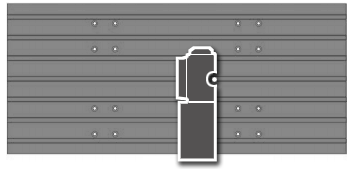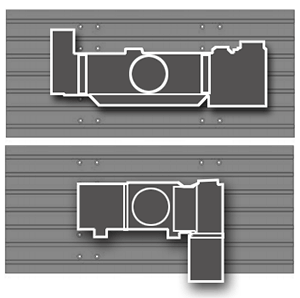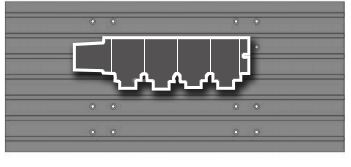The art of drag
Here’s an interesting business objective: Build the meanest, most single-purpose vehicle you can conceive of to travel the 1/4 mile as quickly as humanly and mechanically possible. Repeat. Indefinitely.
As business objectives go, it doesn’t appear to make much commercial sense. Firstly, it consumes money marginally less efficiently than making a pile of bank notes and putting a match to them. Secondly, it risks human life to achieve what, exactly? Surely, as our moment of environmental reckoning looms, we have more important things to do with our time and engineering creativity. Is it possible to justify drag racing – or any motorsport, for that matter – given the environmental challenges we face as a species? Well, yes, it probably is.
Arguably, humans learn most about themselves from the games they play. Businesses of all sizes, shapes and purposes look to sports for the inspiration they need to achieve their particular goals – some prosaic, others profound. Play can also beget progress, especially technological progress. Many of the innovations made in the name of motorsport have real-world benefits, such as the passive safety systems developed in racing car construction, and their eventual adoption in road vehicles. Drag racing also provides a model for focus, determination and holding your nerve; exactly the same qualities business owners and managers need to succeed in their own endeavours.
But there’s another reason why, as engineers and technologists, we can draw inspiration from drag racing: Fire breathing, 3000-horsepower “funny cars” of the type built and developed by Leanders Brothers Racing, Sweden’s 2006 FIA European champions, run on methanol. Made from wood pulp, methanol is renewable, and can be sourced from sustainable forests. Granted, the Leanders car is hardly fuel-efficient: It typically uses 20 litres for a run lasting less than 6 seconds. But that does include the burnout, where the driver warms the tyres by spinning the rear wheels until they all but ignite. Methanol also burns cleaner than gasoline, which at least helps offset some of the noxious gases produced by the gratuitous incineration of tyre rubber.
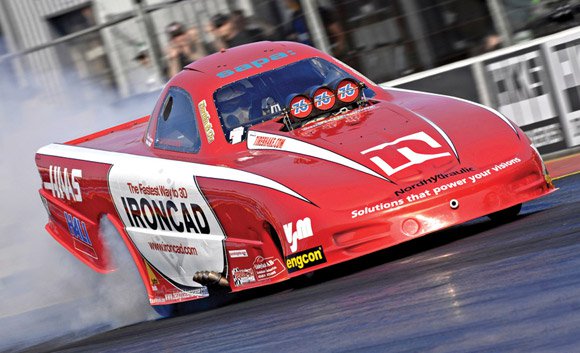
Methanol is a close relative of ethanol, both of which possess octane ratings more than 30 or so points greater than regular pump gasoline. What makes methanol the fuel of choice for the likes of the Leanders Brothers is its suitability for high-compression-ratio engines, meaning it’s ideal for 10,000-rpm, V8 monsters.
But how did two brothers working alone in a draughty farm barn in north-central Sweden become 2006 FIA European champions?
“All competition vehicles are built from NHRA- or FIA-approved parts,” explains Ulf Leanders, younger brother and the team’s designated driver, “so the equipment is similar. That way, well-financed individuals can’t just enter the sport and clean up by throwing money around.”
Rich newcomers quickly realize that it’s not a sport that permits overnight success. “They get bored and leave,” says Ulf. “It’s a very even playing field.”
Velvet Slippers
Unless you’re a space shuttle pilot (or a fellow drag racer) you probably can’t imagine accelerating from 0 to 60 mph in less than 1 second, or for that matter, from 0 to 250 mph in less than 6 seconds.
“At the start, we’re pulling approximately 4Gs (four times the force of gravity),” says Ulf. “It takes a year or two to get used to the violence of the first couple of seconds. During that time, you’re not really driving, you’re just holding on and keeping the throttle pressed to the floor.” Which is made easier by the presence of a metal restraining stirrup over the pedal – a practical consideration, given the explosive force of a launch.
It’s non-driver Jörgen Leanders who is responsible for all the clever engineering on the car, including the all-important clutch. It doesn’t matter how skilled the driver is, the biggest challenge is getting the power down to the asphalt. Since electronic launch controls are banned, it’s down to a slipper clutch to transfer power quickly and smoothly.
“A slipper clutch partially disengages to regulate the amount of engine power delivered to the wheels,” explains Jörgen. “However, because the clutch uses friction to do its job, the pads are prone to serious wear, so we need to be able to quickly strip and reassemble the clutch, often between runs.”
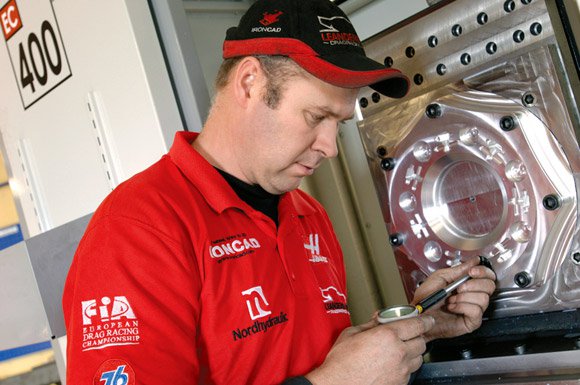
In most racing situations, clutches are made in aluminium to be as small and light as possible. In an F1 car, for example, they’re designed to last just long enough to get the car to the end of the race. Bolted-steel segments help dissipate the heat, but they flex and bend, and can quickly fail. In drag racing, the clutch has to transfer a huge and violent surge of power, so the aluminium is replaced with titanium, which is tougher but heavier.
The Leanders clutch uses a floating-plate system in place of bolted segments, which improves heat dissipation and makes it easier to take apart and rebuild after a run.
In the corner of the Leanders workshop, surrounded by glass-fibre vehicle body parts and semi-used balloon tyres, sits a brand-new Haas EC-400 horizontal machining centre. Bolted to one pallet is the aluminium base of a half-finished clutch.
“We mill just about everything on the clutch, except the bolts, some small axles that hold the fingers and the adjusting screws,” says Jörgen. “The aluminium is Alumec,” he adds, a relatively hardwearing tool-making aluminium with good machining characteristics and low weight.
“We also machine quite a lot of coated titanium, as well as tool steel for the fingers. The facings and floaters are made from regular carbon steel,” Jörgen adds.
The Leanders clutch is a new project – one the team hopes will give them the split-second advantage they need to retain their title in 2008. The typically sanguine Jörgen is unfazed by the engineering challenge of designing and making parts, as well as learning to operate a CNC machine tool.
“The Haas is very easy to use,” he says. “It was making parts the day after it was installed. We currently only operate the Haas around 100 hours a month, but if the regulating body in San Diego approves the clutch, we’ll be using it a lot more. Ultimately, we may even sell our product to other teams,” Jörgen says.
Heavy metal
The lights hold steady. The driver holds his breath and braces himself against the bullying crush of acceleration. In a heartbeat, sky and Earth are torn asunder as the taught, fragile chassis rockets through the valley of death, pursued by a flame of blue and white. It’s all over in a matter of seconds.
Some businesses appear pointless to some people, but make a great deal of sense to others: their customers, for example. At a typical drag race meet, hundreds of enthusiasts line the 1/4-mile stretch of asphalt, many of whom are engineers – not necessarily the high-forehead types who work for NASA or IBM, but the gritty, often self-taught, types who run machine shops, doing clever things with metal and machine tools.
Besides offering ear-splitting entertainment to a minority fan base, what can drag racing teach businesses beyond clever engineering? In his best-selling book Mastery, author George Leonard uses Zen philosophy and another sport, Aikido, to illustrate how long-term success only comes with a similarly long-term dedication to what you do. He justifiably accuses western business and industry of being guilty of “short-termism,” a trait he skewers as the grave and insidious enemy of lasting achievement. The only way to win in drag racing is, as defined by the very nature of the sport, to keep doing the same thing over and over again, obsessing over the details until progress comes, often one hundredth of a second at a time. Strangely, drag racing could be considered a Zen discipline, albeit a very loud one.
As obvious as it may seem, Leonard tells readers that whatever your obsession, keep doing it until you do it incredibly well, and your chances of success will be greatly increased. You may only be a small, two-man drag-racing team based in the frozen north of Scandinavia, but with the right tools and long winters, anything is possible.
The Haas is very easy to use. It was making parts the day after it was installed. We currently only operate the Haas around 100 hours a month, but if the regulating body in San Diego approves the clutch, we’ll be using it a lot more. Ultimately, we may even sell our product to other teams.
Jörgen Leanders


